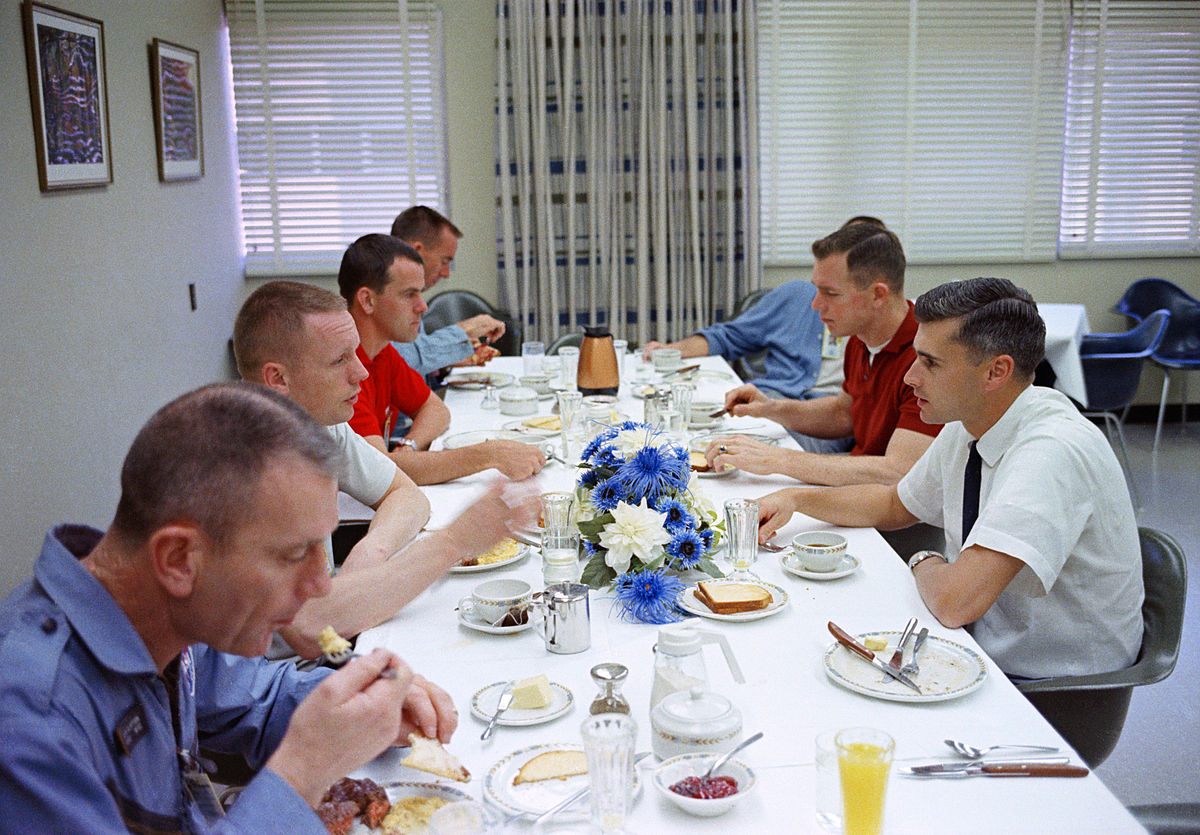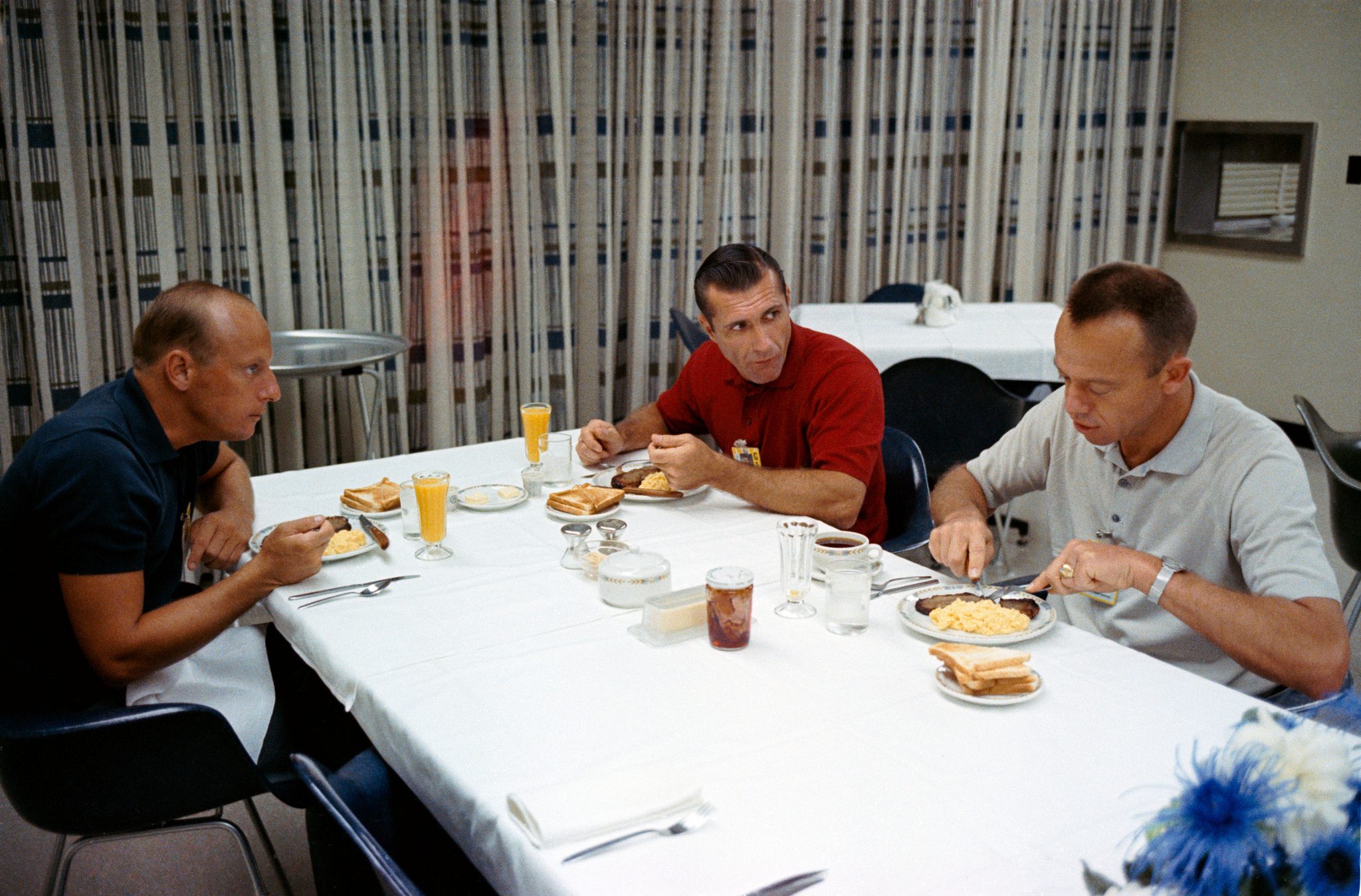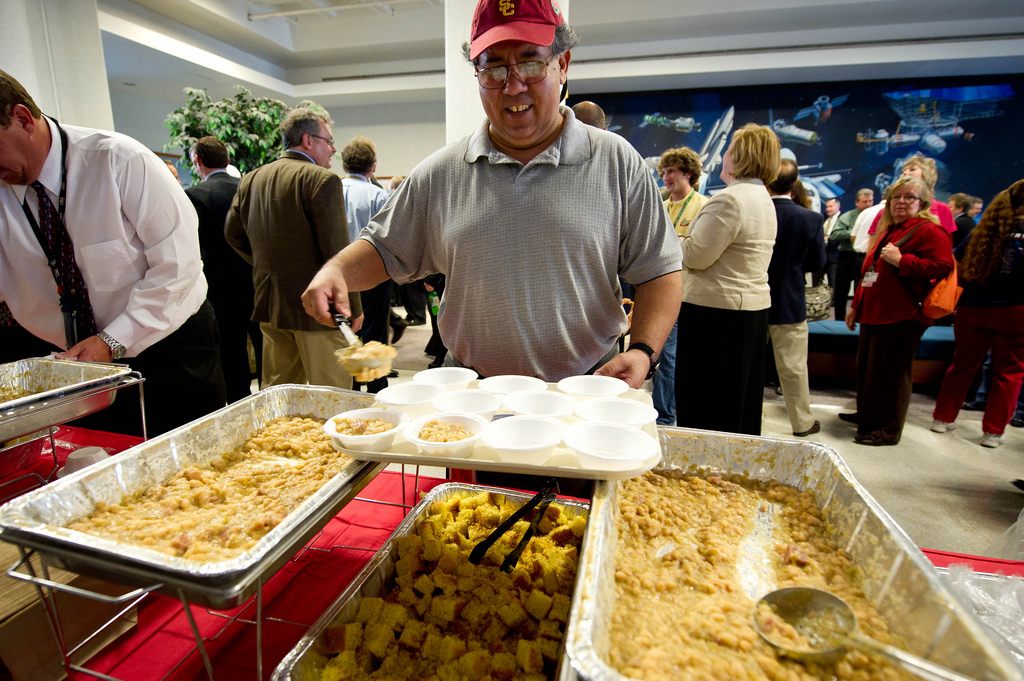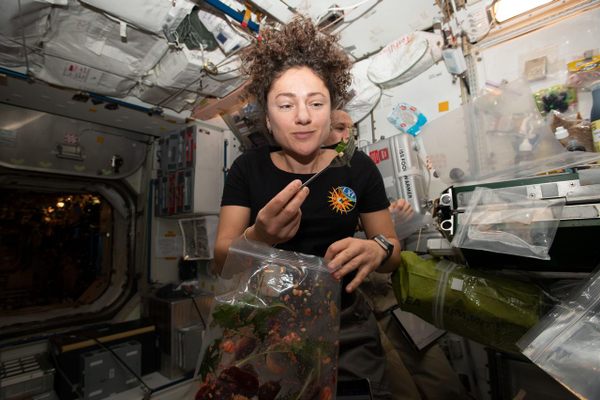Why Russian Astronauts Pee on a Bus Tire Before Launching Into Space, and Other Pre-Flight Rituals
 (Photo: Christopher Michel/Creative Commons)
(Photo: Christopher Michel/Creative Commons)
Imagine it: you’re an astronaut and launch day for your first spaceflight has arrived. Years of intense study and training have culminated in this moment. You’re suited up and ready to go. In mere minutes, you’ll be getting strapped into your spacecraft and blasting into the cosmos.
So, how do you spend these final precious moments on Earth?
If you’re flying from the U.S., you’ll probably play poker. If you’re flying aboard a spaceflight leaving from Baikonur Cosmodrome in Kazakhstan, you’ll be ordered to pee on the back-right tire of a bus.
It’s tradition.
Such rituals, many of which pay homage to the launch-day behavior of spaceflight pioneers, help to soothe frayed nerves on a day filled with excitement, according to former NASA astronaut Paul Lockhart. Lockhart, who piloted two Space Shuttle missions to the International Space Station during 2002, recalls participating in “comforting actions that make what you’re doing approachable, so that you’re more calm.” Though some of these traditions have a high quirk factor, they also provide a sense of stability and make astronauts feel linked to those who have traveled before them.
 The November 23, 2002 launch of Endeavour, piloted by Paul Lockhart. (Photo: NASA)
The November 23, 2002 launch of Endeavour, piloted by Paul Lockhart. (Photo: NASA)
“People become very comforted in doing the same routine before launch,” says Lockhart. “And sometimes that has to happen two or three times for a single mission, because your launch could be delayed if there was weather or if a system failed.”
For spaceflights leaving from Kennedy Space Center in Florida, the pre-launch traditions begin with a hearty breakfast and a celebratory sheet cake—regardless of the time of day or night.
“The breakfast is a tradition that’s been held since probably the early days of the space program,” says Lockhart. A few hours before launch, the astronauts, dressed in their crew shirts and slacks, gather for a feast of steak and eggs, accompanied by a celebratory cake. The breakfast serves as a last-minute photo op, as well as an opportunity for the crew members to line their stomachs with sustaining fare for the long flight ahead. But nerves often get in the way of nourishment.
 The Gemini 8 crew having a super-casual pre-launch breakfast in March 1966. (Photo: NASA)
The Gemini 8 crew having a super-casual pre-launch breakfast in March 1966. (Photo: NASA)
In his memoir, Riding Rockets, Mike Mullane, who flew three Space Shuttle missions between 1984 and 1990, recalls a communal loss of appetite on launch day: ”Most of us ate nothing or very lightly. I had a piece of toast.”
For Mullane, the standard steak, eggs, and coffee was not on the menu. “One bite of that fare and I would have vomited. Nobody drank coffee. That would have been bladder suicide,” he wrote.
Since the early days of NASA’s manned flight program, the breakfast has been an exercise in seeming calm while freaking out on the inside. “Launch breakfasts always have an air of studied casualness,” writes Michael Collins, the Command Module Pilot on the Apollo 11 mission, in his book Carrying the Fire. On the morning of that fateful mission to the moon, “anyone overhearing our conversation would think that we five were slightly bored at the prospect of another empty day.”
 The Gemini 11 crew getting their steak and eggs on in November 1966. (Photo: NASA)
The Gemini 11 crew getting their steak and eggs on in November 1966. (Photo: NASA)
After breakfast and the cake that no one eats, astronauts don their launch suits and, with minutes to spare before the van arrives to transport them to the launch pad, sit down to play cards. Lockhart explains the rules of the game: “It’s not a game of who has the best hand, it’s who has the worst hand,” he says. “And you can’t leave until the commander has the worst hand at poker. So you sit there playing cards and you’re saying, ‘Come on, let’s hurry up, you need to win by losing so that we can go.’”
Sometimes, if the cards aren’t falling as they should, this game of bad-on-purpose poker can come perilously close to messing with the launch schedule.
“I recall one time we got everything completed about one minute before we had to walk out the door,” says Lockhart. “But it all came out in good order.”
 Having completed the crucial poker game, Lockhart, front left, walks toward the van that will carry the STS-111 crew to the launch pad. (Photo: NASA)
Having completed the crucial poker game, Lockhart, front left, walks toward the van that will carry the STS-111 crew to the launch pad. (Photo: NASA)
Following the termination of the Space Shuttle program in 2011, manned launches from Kennedy Space Center are on hold. Until at least 2017, when stateside human spaceflight launches are projected to resume, American astronauts fly from Russia’s Baikonur Cosmodrome in Kazakhstan, where a whole other set of pre-launch traditions is in place.
Most of the Russian rituals pay tribute to Yuri Gagarin, the Soviet cosmonaut who, in 1961, became the first human to go to space. The preparations kick off about two weeks before launch, when the astronauts visit Gagarin’s old office in Star City and sign a guest book. Five days to a week before launch, the astronauts, now staying at Cosmonaut Hotel in Baikonur, go to a grove on the Avenue of the Cosmonauts and plant a tree. Every space traveler who has flown from Baikonur, going all the way back to Gagarin, has planted a tree at this grove.
 Crew members of Expedition 36/37 plant a tree at the Avenue of the Cosmonauts in May 2013. (Photo: NASA/V. Zelentsov)
Crew members of Expedition 36/37 plant a tree at the Avenue of the Cosmonauts in May 2013. (Photo: NASA/V. Zelentsov)
In the 48 hours before launch, the Gagarin homages really ramp up. Two days before leaving earth, crew members get a haircut. On the night prior to launch, it’s time to watch the 1969 movie White Sun of the Desert, a high-action tale set during the Russian civil war. When the new day dawns, crew members depart the Cosmonaut Hotel, signing their room doors as they leave. All of this mimics the pre-launch behavior of Gagarin prior to his historic 1961 flight aboard the Vostok.
 Crew members of Expedition 42 sign their hotel room doors in November 2014. (Photo: NASA/Aubrey Gemignani)
Crew members of Expedition 42 sign their hotel room doors in November 2014. (Photo: NASA/Aubrey Gemignani)
Once the crew has left the hotel, each member participates in a newer tradition: prayers and blessings performed by a Russian Orthodox priest. A man in gold-accented black robes flings holy water onto each space traveler while pushing a golden cross into their face. Every crew member is invited to receive the blessing, regardless of their religious affiliation or lack thereof. Anousheh Ansari, an Iranian-American, Muslim woman who traveled to the ISS as a self-funded space traveler in 2006, recalls in her memoir that “the Russians had asked me if I had any objection to participating in a Christian ceremony, and I replied that a prayer in any language and any religion is still a prayer.”
 Russian Flight Engineer Oleg Artemyev gets blessed at Baikonur prior to the March 2014 launch of Expedition 39. (Photo: NASA/Bill Ingalls)
Russian Flight Engineer Oleg Artemyev gets blessed at Baikonur prior to the March 2014 launch of Expedition 39. (Photo: NASA/Bill Ingalls)
The blessing is one of the few Russian traditions not linked to Gagarin. According to the European Space Agency, it was established in 1994, when Soyuz TM-20 mission commander Alexander Viktorenko requested that the rocket be blessed prior to departing for the Russian space station Mir. Ever since, the blessing has been performed on the rocket, the crew, and even members of the media, who get doused in holy water after assembling on the desert steppe.
 The power of Christ compels you to follow the rule of thirds. (Photo: NASA/Joel Kowsky)
The power of Christ compels you to follow the rule of thirds. (Photo: NASA/Joel Kowsky)
Following the blessing, crew members board a bus to the launch pad. But it’s not a direct journey—there is a mandatory bathroom break along the way. According to the ESA, Gagarin was on his way to the launch pad in 1961 when he realized he needed to urinate one last time. The bus was stopped, and Gagarin got off, headed to the back-right tire, and relieved himself. As a tribute, each bus trip to the Baikonur launch pad now incorporates a stop, during which crew members pee on the back-right bus tire.
“Much is made of this as a tradition, but really, if you’re going to be locked in a rocket ship, unable to leave your seat for quite a few hours, it’s just common sense,” writes retired astronaut Chris Hadfield in his book An Astronaut’s Guide to Life on Earth. The only problem is that, when clad in a launch suit, one cannot simply unzip one’s fly. Hadfield writes that “the suit techs on board had to help us undo all the tricky fasteners they’d painstakingly closed not an hour before, so we were able to urinate manfully on the tire without spoiling our plumage.”
Women are excused from participating in the urination ritual, but may bring a vial of their own urine to pour on the tire if they so desire.
All of these rituals help calm nervy space travelers, but what of the astronauts’ families who are tasked with nervously watching their loved ones launch into space? They, too, participate in traditions designed to keep the acknowledge the specialness of the experience while keeping worrying to a minimum.
 Cosmonaut Gennady Padalka gets a trim at Baikonur, two days ahead of the March 27, 2015 launch of Expedition 43. (Photo: NASA/Bill Ingalls)
Cosmonaut Gennady Padalka gets a trim at Baikonur, two days ahead of the March 27, 2015 launch of Expedition 43. (Photo: NASA/Bill Ingalls)
“For the shuttle launches, the family are taken down to the launch control center,” says Lockhart, who, in addition to flying for NASA, served as an “astronaut escort” at Kennedy Space Center, during which he accompanied families on launch days. According to Kennedy tradition, children are rounded up in front of a whiteboard, given markers, and allowed to draw anything they like.
“They do this to keep the children occupied while the countdown process is occurring,” says Lockhart. “NASA covers that whiteboard with plastic and it becomes wall art. So if you go over to the launch control center at Kennedy Space Center, and you walk through the halls, you’ll find dozens of these whiteboards that have been drawn by the children.”
The whiteboards provide a fascinating kid’s-eye view into what it’s like to have a family member blast off into space. “You get a big perspective of a young child who is six or seven and who doesn’t really understand what’s happening,” says Lockhart. “Then you’ll get the art from the teenage sons and daughters, or maybe someone who’s just entered into college, and their drawings portray what’s happened to their family. Some of them are really enlightening.”
Following a successful launch, families visit the launch director’s office and place their loved one’s mission patch on the door. Then, they are invited to participate in one last tradition of unknown origin: tucking into a meal of beans and cornbread alongside NASA crew. “My wife did not like this one,” says Lockhart. “The kids are running everywhere, and they serve the family cornbread and some sort of cold beans. Who knows why.”
 Post-launch cornbread and beans: an inscrutable NASA tradition. (Photo: NASA/Bill Ingalls)
Post-launch cornbread and beans: an inscrutable NASA tradition. (Photo: NASA/Bill Ingalls)











Follow us on Twitter to get the latest on the world's hidden wonders.
Like us on Facebook to get the latest on the world's hidden wonders.
Follow us on Twitter Like us on Facebook